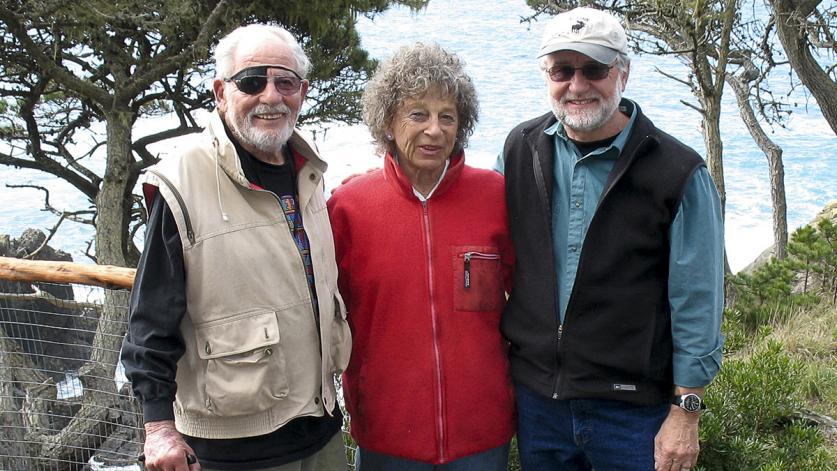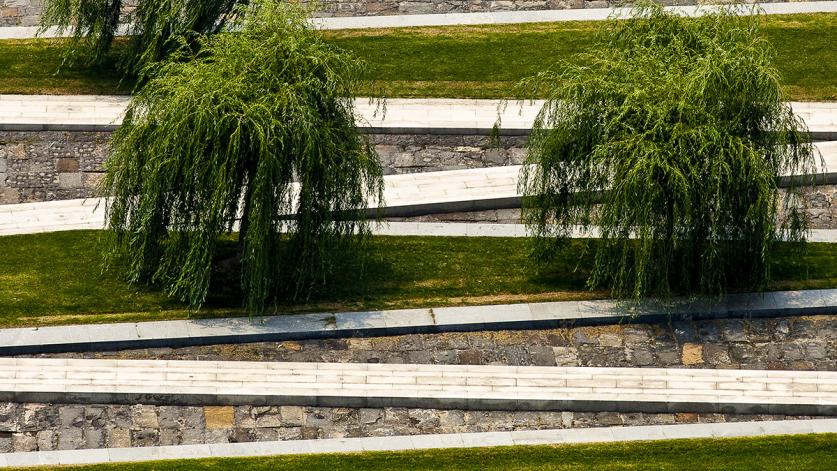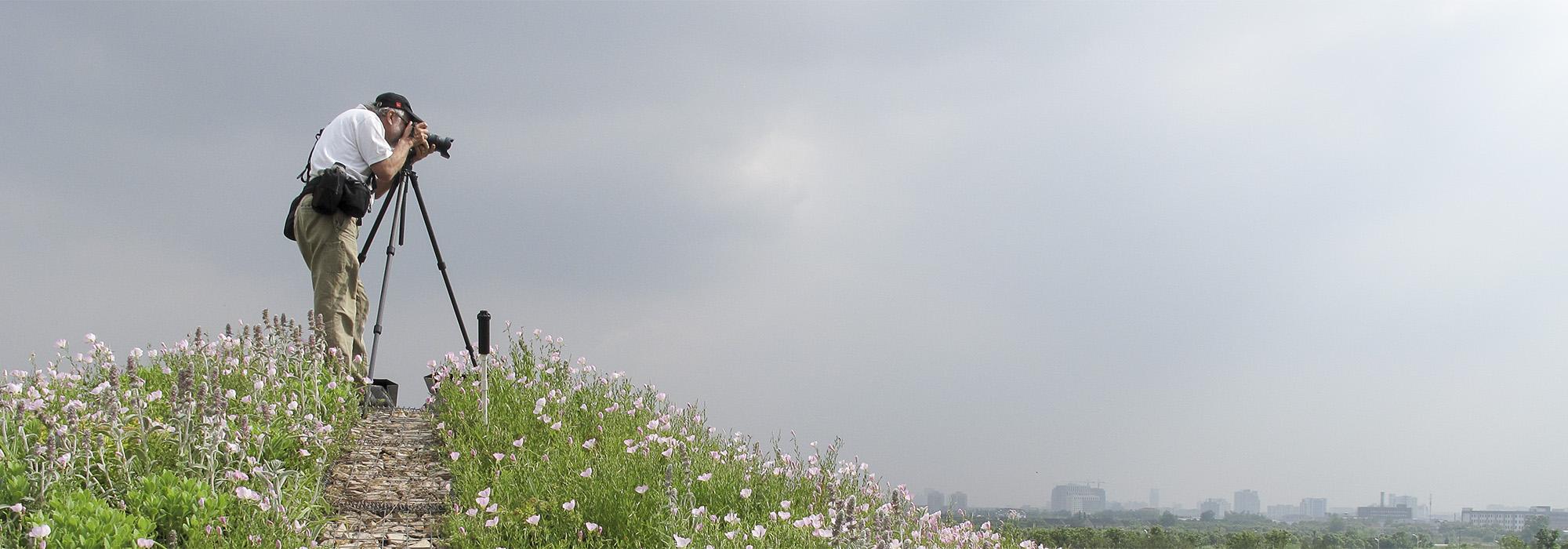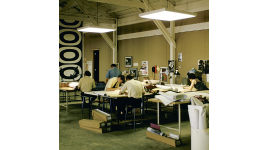It Takes One: Tom Fox
I was a photographer with SWA (Landscape Architecture, Planning and Urban Design firm) for 34 years. SWA is unique in the landscape architecture design profession in that it has employed full-time photographers since the inception of the firm. I worked with Gerry Campbell, SWA’s first photographer, until he retired.
After graduating from Brooks Institute of Photography, in Santa Barbara, with a B.A. in industrial photography, I began working for SWA in their Sausalito office. I was transferred after three months to the Houston office and spent the next ten years there. I returned to the Sausalito office in 1992. I have overseen the transitin of film to digital capture, which changed the way SWA managed and distributed its imaging resources.
I was introduced to The Cultural Landscape Foundation (TCLF) by SWA’s former CEO Kalvin Platt, who served as one of the first board members for TCLF and introduced me to Charles Birnbaum. Charles was beginning to build the Oral History Project, and Mr. Platt suggested SWA donate in-kind my services as a videographer to help launch the project. Over the years, Charles and I have documented such notable post-War landscape architects as Lawrence Halprin, Richard Haag, Cornelia Oberlander, Ruth Shellhorn, and Robert Royston.

Q: How do you define a cultural landscape?
Cultural landscapes to me are spaces either natural or created that people assigned some sort of legacy. Most show the imprint of humans in some way, but others may simply have a mythological imprint. An example might be where an indigenous group has assigned the source of their creation myth to a mountain or some other natural feature. That feature becomes sacred but is never set foot upon. So from this point of view, there may be cultural landscapes that are only known to that group or culture that we will never be aware of.
Q: How did you come to specialize in landscape photography?
Before I studied photography, I was working with retail nurseries, landscape construction, viticulture, greenhouse management, vineyard plant propagation, and estate management in Napa Valley. This background fused pretty well with landscape architecture. I also have a great love of plants and design, so for me this seemed like a natural fit.
Q: How would you describe your approach to photographing landscapes?
When photographing a landscape, the end use of the images dictate how you approach it. Generally, before I photograph a project, I study the site plan and any other graphics associated with the project. I also read any project description material to get a sense of what the story of the project is. I talk with the principal designer to gain their insights about the project and to understand the “big idea” behind the design. I provide the principal designer a project sheet to fill out, which asks important questions about the project and includes a check-list of features to be aware of, as well as features or situations to avoid. I also make contact with the client to establish a relationship so that I can understand the project from their perspective and to work with them to gain unfettered access to the site.
Once on the site, for me, it is a process of discovery. I spend much of my time looking and evaluating how the light plays on the terrain and then let the design reveal itself as I walk and re-walk the project. As I see compositional opportunities, I make mental notes on the time the best light will occur at those locations and return to photograph when that light happens. Of course, photographic opportunities can happen spontaneously, particularly with people and events, and you have to always be ready for happy surprises.
Q: Do you feel that you’ve developed a photography style that is unique?
I photograph in what would be described as a straight style. It is almost documentary in its approach. I try to tell the story of the project visually so that when you group my photographs of a project together as a whole they should provide a visual narrative of the landscape. Of course, I try to use light as the medium for making the spaces come alive and will manipulate the point of view as much as I can to amplify the important and positive features of the design. I will use black-and-white if I feel it enhances the feel of the environment or provide a more expressive representation of the space. I am not a big fan of over-processing images, as can be seen in many commercial real estate photographs with the overdevelopment of HDR technology. I think great landscapes project their own individuality and personality, so I try to let the design show through on its own.
Q: What are the advantages and disadvantages of the medium of photography in capturing the essence of a place?
It is obvious that photography is well suited to capture the essence of a place at a moment in time. Almost all designed landscapes seem to reach a level of maturity that may or may not hold up well because of aging plant and hardscape materials, as well as other features, such as water and lighting that no longer operate. When planned correctly, photography can capture a place at its peak of expression.
Still photography is limited in capturing kinetic features such as fountains, programed lighting, sounds, people moving within and through the space, and compressing time. The use of video and audio further expands the possibilities of capturing the essence of a place.

Q: Do you have a favorite type or style of landscape to photograph?
I tend to prefer landscapes that are more minimalist in style with very simple forms and strong lines and features - almost abstract. These tend to create strong shadows, so the light enhances the design features. Having said that, it is important to show how people use and move through and react to a space, so I try to use people as a design element in my photos but also show how they use the space.
Q: You have demonstrated an interest in contributing to the documentation of historic landscapes outside of your work with SWA. What motivates you to dedicate time to these tasks?
Having been an in-house photographer for an internationally recognized landscape design firm for such a long time has been an education unto itself. I understand the design process and what it takes to create a great project along with all the challenges from clients to budgets to execution. So to have the opportunity to spend time documenting some of the greatest landscape architects of their generation at a time that the profession is maturing and coming into its own has been a privilege. To be a part of creating a necessary and historic record of these designer’s great achievements is one of the highlights of my career.
Q: You recently retired from SWA and are pursuing personal photo projects. Care to describe any of those projects and why you have selected them?
In terms of photography, I am working to organize my personal photo archives taken over the many years while working at SWA. I am doing some self-assignments very close to home that involve the natural environment and will be doing some road trips to explore some ideas about land and its fragility.
I would like at some point in the future to do some volunteer work with photography that would involve working with more socially focused issues. There is a non-profit organization in the Bay Area called Center for Investigative Reporting that focuses on issues of injustices that otherwise would remain hidden from the public eye that interests me. I would, of course, like to stay involved with TCLF, as I feel the work that is being done is so necessary for the future of the profession.
Q: What is the message that you would like to give our readers that may inspire them to make a difference?
I am fortunate to live in an area of the United States endowed with an incredible natural environment. I don’t have to travel far to experience many different types of natural terrain. I am also close to dense urban centers and can take advantage of what they have to offer. I realize many people do not have those kinds of options, but wherever you live, there are always opportunities to explore. I have worked in some of the densest urban centers in the world and find that those environments offer some of the richest outdoor cultural experiences one could find.
Since world-wide demographics point toward more of our populations inhabiting these urban centers, I think there are great opportunities to contribute to making our cities more livable. Photography offers many avenues for fostering change and challenging people to question their relationship to their environment, whether they find themselves in a dense urban setting or in a natural environment under threat. I plan to spend part of my retirement volunteering for causes and organizations that are trying to make a difference in these arenas, and I encourage more people to do so.









